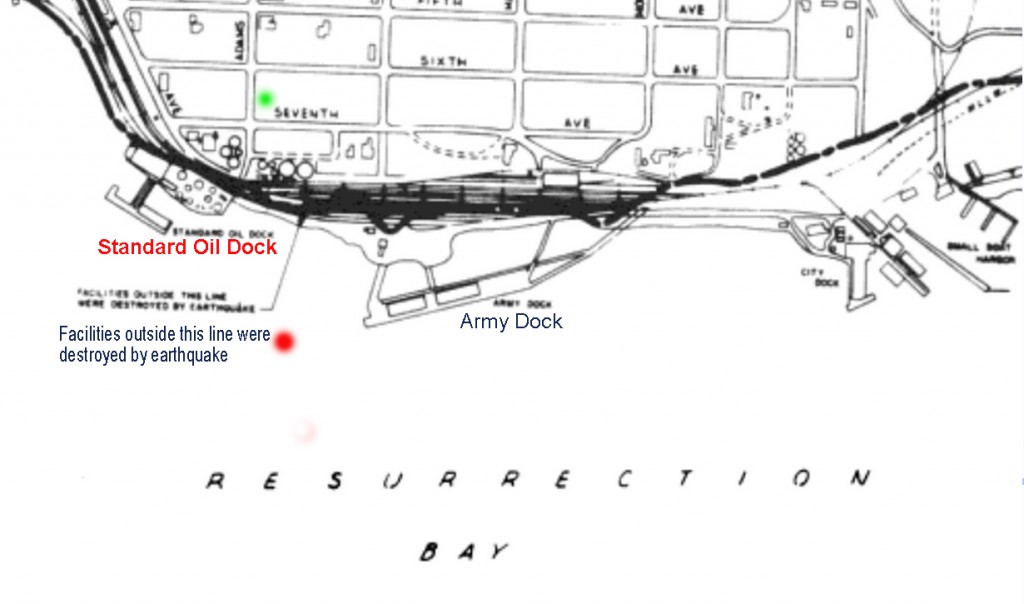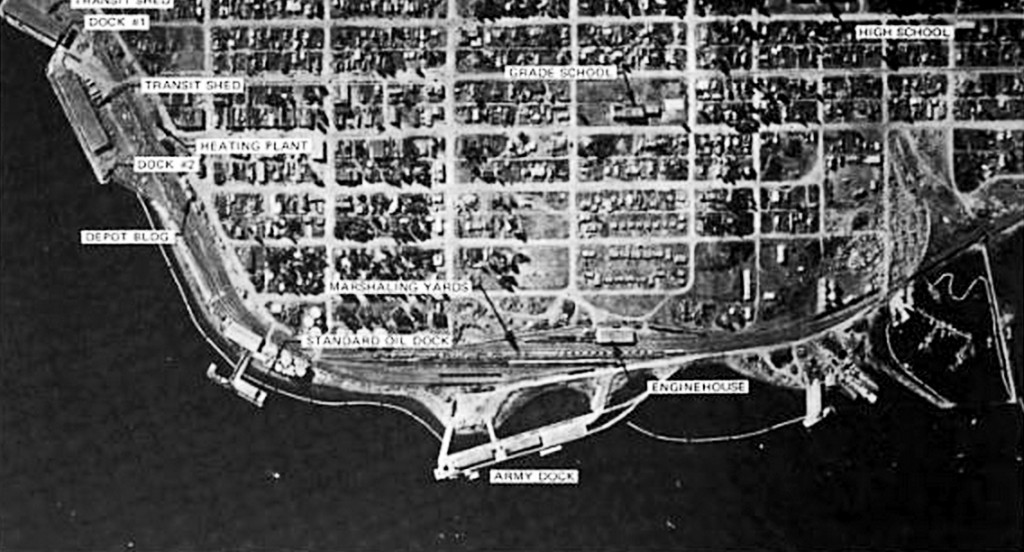The 1190 page report “The Great Alaska Earthquake of 1964” by the Committee on the Alaska Earthquake of the Division of Earth Sciences, National Research Council, Engineering, published by the National Academy of Sciences, Washington, D.C. in 1973 is a fascinating read regarding the fate of Seward on March 27, 1964. The preface is beautifully succinct and yet overwhelming in scope. The sections of interest to me at this time, relating to the damage done to Seward, begin on page 144, with a chapter entitled “Submarine Landslide at Seward” which begins by acknowledging that Seward was one of the hardest hit cities although it wasn’t the earthquake or tsunami, as much as the submarine landslides, that did the most damage.
From the same report, pg. 153: “Most significant from the standpoint of property damage was the effect of the submarine landslide, which completely destroyed most port and harbor facilities. A strip of waterfront about 50-400 ft wide and 4,000 ft long, disappeared into the bay.” Although visually it appeared that just the waterfront disappeared, underwater measurements from pre and post earthquake revealed that the waterfront was “only part of a much more massive landslide…” The report goes on to say that “…it appears that a strip of tideflats, 500-600 ft wide and almost 1 mile long, disappeared into the bay.” “Water originally 30-35 feet deep is now over 100 ft deep.”
About 30 seconds into the 4 minute earthquake “a large section of the Seward waterfront slid into Resurrection Bay, carrying with it oil tanks, docks, warehouses, and other harbor facilities.” But the very worst assessment is from page 989 “An unknown number of oil-tank cars, belonging to the Standard Oil Company, were damaged or destroyed.”
In the diagram below I’ve overlayed the text (which is blurred) with clearer type, and put a red dot where the source of the oil leak is in the Bay waters. You can see that it’s down slope from where the railroad rails were located and railcars would have been parked as they approached the Standard Oil Tank Farm. According to Tom’s family, who were in Seward for the earthquake, a large shipment of oil cars had just arrived the day prior to the earthquake. Who knows how many of them lie on the bottom of Resurrection Bay, full of fuel, slowly rusting and releasing their oil to contaminate the environment and endanger the many wild salmon runs that feed into the bay.


When you look at the waterfront now it’s hard to believe it used to be an industrial zone, with tank farms, railroad tracks and commercial docks. Today it’s an open parking area for camping, RV’s and a playground/skateboard park, with lots of grassy areas and just a few bits of metal remnants and wood pilings as reminders of the devastation from the earthquake.

